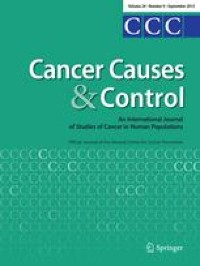Abstract
Objective
Identifying potentially modifiable risk factors for ovarian cancer is essential for prevention because this cancer is predominantly detected at a late stage. Here, we estimated the relations of general adiposity and measures reflecting body fat distribution to the risk of epithelial ovarian cancer.
Methods
We ascertained 683 ovarian epithelial cancers (343 high-grade serous, 141 non-high grade serous) among 145,575 women, aged 50–72 years (median follow-up 12.6 years), from the National Institutes of Health—American Association of Retired Persons (NIH-AARP) Diet and Health Study. Using Cox models, we estimated confounder-adjusted hazard ratios (HRs) and 95% confidence intervals (CI) for associations of overall ovarian cancer, high-grade serous and non-high-grade serous carcinoma with body mass index, waist circumference, hip circumference, waist–hip ratio, waist–height ratio, body adiposity index, body shape index, and abdominal volume index.
Results
Anthropometric measures were unrelated to overall ovarian cancer, high-grade serous cancer, and non-high-grade serous cancer. For example, the HR for overall ovarian cancer per standard deviation increment of body mass index at baseline was 0.98 (95% CI 0.88–1.10). Similar associations were observed with measurements of body fat distribution.
Conclusion
These results do not indicate that adult adiposity is associated with ovarian cancer risk in post-menopausal women.



No comments:
Post a Comment